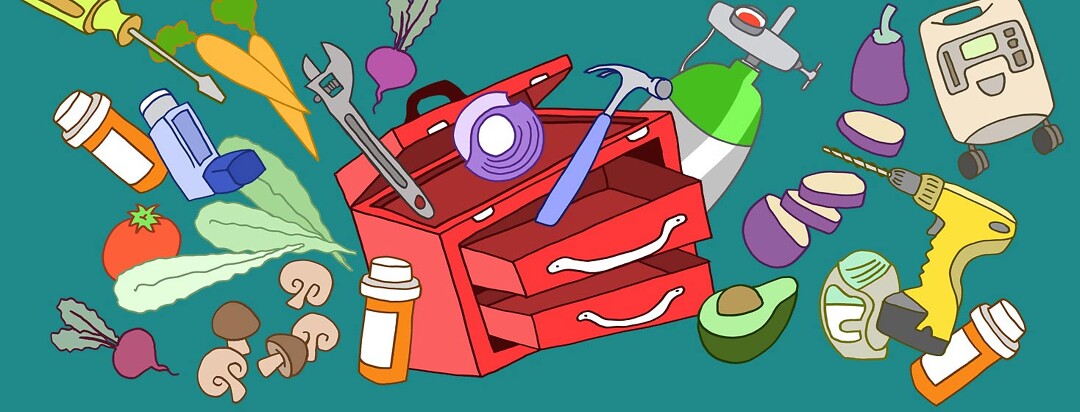What's in Your Toolbox? (Part 2)
Editor's note: This is part 2 of a series. Be sure to check out part 1!
Most of us with COPD have been prescribed some sort of inhaler, if not multiple. There are many inhalers available and vary from country to country. I am on two maintenance inhalers, a rescue inhaler as needed and a nebulizer as needed. What works for me may not work for you.
Options to discuss
Don’t be afraid to speak up to your doctor if you feel one is not working well or there are side effects. If you don’t know how to use the inhaler, your doctor or pharmacist can show you. Ask if a spacer is necessary to make your inhaler more effective.
I am also on oxygen. Although I am not thrilled with this part of my treatment, I know it is not only keeping me alive but also providing a better quality of life. I have gotten stronger over the last few years because of exercise, so I am allowed to remove the oxygen when I am not exerting myself. I am also allowed to increase it slightly when exercising. These are options you can discuss with your doctor. I kept track of my oxygen levels with an oximeter to help my doctor see changes during resting and activities.
Anxiety
I never had much of an issue with anxiety until my COPD became severe. Now, trying to control shortness of breath daily has increased my anxiety considerably. Learning to control it makes a significant difference in how well I breathe.
Learning to control my breathing was crucial. I practice daily slowing my breath down and using pursed-lip breathing. I also use meditation and Qigong to help with this. I think it may always be a battle I will fight, but these tools help me every day in controlling anxiety.
Nutrition and cooking
This has been difficult because my needs have changed over time. I no longer have the appetite that I used to. I know this isn’t all caused by COPD, but aging as well. My husband’s appetite has changed as well as he has gotten older and does not have COPD.
My meals are now much smaller but I eat more frequently. It took me a long time to get this right and it is still a work in progress. I am a carb lover. I enjoy pasta, rice, and bread, but they don’t love me as much anymore. I have learned to fill my plate up with more vegetables and just a taste of pasta or rice. I don’t eat a lot of bread anymore. Foods that I used to have in a sandwich are usually now on a bed of lettuce or plain. My crockpot is my best kitchen tool, especially for my favorite soups.
I have had to learn to drink more water. My drink of choice was always iced coffee with lots of cream and sugar. Now I treat myself once or twice per year. I can still eat dairy products, although I realize it bothers others with COPD. I feel it is trial and error in finding what you can and cannot eat, along with portions. More and more I find myself grazing during the day and no longer want a big meal.
Other tools
There are many articles written about how to make showering easier. Use of a chair, handheld hose, and terry robe is the most common. No-rinse soap cloths are very handy in between showers.
I make use of items on wheels and long handles. My hamper is on wheels for ease on laundry day. I make use of a stool on wheels for housework. My rollator walker comes in handy for carrying heavy items.
Dusters and small sponges with long handles are great tools for cleaning. A tool for picking items up off the floor or from high places is a big help in saving breath. An apron with numerous pockets helps me carry necessary items throughout the day such as a phone, oximeter, and rescue inhaler.
There are many tools that can provide a better quality of life for us. Some are obvious, some require imagination. What tools are in your COPD toolbox?
Editor's Note: We are heartbroken to share that Carol passed away in February of 2022. Carol's storytelling and advocacy will be deeply missed, but her legacy lives on through her articles and in all the people she inspired.

Join the conversation